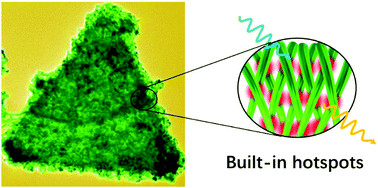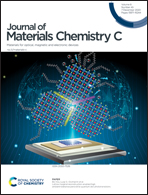Hierarchical growth of Au nanograss with intense built-in hotspots for plasmonic applications†
Abstract
Hierarchical plasmonic nanostructures that embed multiple shape-discrete domains and thereby unique plasmon resonance have implications in detection, diagnostics, and photovoltaics. Despite great progress in self-assembly of gold nanostructures, direct synthesis of hierarchical Au nanostructures that afford dense and steady intrinsic hotspots has remained less explored. This is partially because nanocrystal growth principally yields symmetrical nanocrystals with simple morphologies in monometallic systems. We report on the seeded synthesis of “Au nanograsses” on Au nanoplates that comprise an array of bent Au nanowire and exhibit total light absorption and intrinsically coupled plasmon resonance. The growth of Au nanograsses is achieved through competition between Au deposition and surface ligand passivation, which restricts the deposition of upcoming Au atoms onto the freshly deposited Au surfaces that have not been passivated. By controlling reaction kinetics and ligand passivation, the secondary nanostructures can be tuned from nanowires to nanotubes and near-spherical islands. Theoretical simulations indicate a stronger near-field electromagnetic field and a denser distribution of built-in hotspots of the Au nanograss than the near-spherical nanoisland array. Application of the Au nanograss in single-particle surface-enhanced Raman scattering (SERS) reveals a greatly elevated enhancement effect of the Au nanograss compared to the nanoisland array by nearly one order-of-magnitude.



 Please wait while we load your content...
Please wait while we load your content...